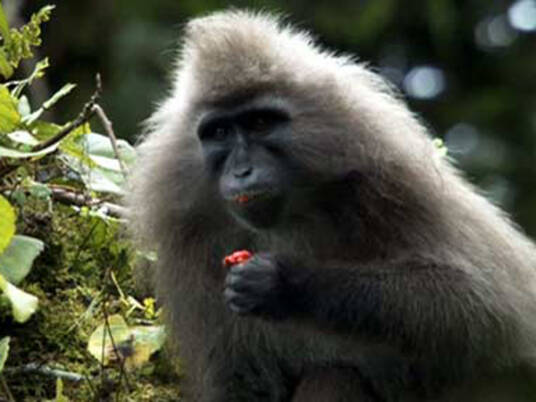Rungwecebus kipunji
IUCN
LCBasic Information
Scientific classification
- name:Rungwecebus kipunji
- Scientific Name:Rungwecebus kipunji,Kipunji,Rungwe Chipanzi Monkey, Highland White-browed Monkey, Rungwe Capuchin Monkey
- Outline:Primates
- Family:Monkey R.Capuchin
Vital signs
- length:85-90cm
- Weight:10-16kg
- lifetime:No verification information
Feature
First new primate species confirmed in Africa in 83 years
Distribution and Habitat
Distributed in the southern mountainous areas of Tanzania, it is a Tanzanian monkey species endemic to Tanzania. It lives in the southern highlands of Rungwe-Livingstone Forest and Ndundulu Forest Reserve in southwestern Tanzania. The area inhabited in Rungwe-Livingstone Forest is about 70 square kilometers, and the area in Ndundulu Forest Reserve is about 3 square kilometers.
Chipangi monkeys mainly live in trees. Only occasionally, due to lack of food or conflicts within the group and to escape predators, will they descend to the ground. In Rungwe-Livingstone Forest Reserve, this monkey species lives at an altitude of 1750-2450 meters, and in Ndundulu Forest Reserve, it lives at an altitude of 1300-1750 meters.
Appearance
This is a medium-sized monkey. The head and body length of an adult Chipanji monkey is 85-90 cm and the weight is 10-16 kg. It has a very long tail and shiny fur. Except for the black hair on the face, hands and feet, its body is covered with dense reddish brown, brown to brown hair.
The forelimbs are lower and darker in color, the hands and feet are black, and the abdomen and tail are beige. The cheeks are narrow, and there are a few tufts of gray-brown hair fanning out from the black muzzle. There is an upright crown of hair on the top of the head and a black face. The species' unique long-haired coat is believed to be a protection against the cold and severe climate at high altitudes. This monkey has a unique vocal sac that can produce loud or low-pitched sounds.
Details
Kipunji monkey (scientific name: Rungwecebus kipunji) is a new monkey species discovered in the highland forests of Tanzania in 2005. It is a new genus of animal. This new monkey species was originally called the highland white-browed monkey, but now it has been renamed the "Kipunji" monkey and should be classified into a new genus. This is the first time in 83 years that scientists have confirmed a new species of primate in Africa.

Chipanji monkeys live in forests at an altitude of 2,400 meters and feed on leaves, petals, bark, fruit, moss, and invertebrates. The calls they make are similar to those of geese, which are completely different from those of other primates and are very peculiar.
The kipunji monkey has a very limited range and its already small population is declining. The main threats to the species are the loss of native forests and habitat destruction.
The discovery of new species is driven by a combination of new technologies, targeted research into seldom explored ecosystems, and a determination to identify plants and animals before their habitats disappear. The kipunji monkey is one of 300 previously undiscovered mammals discovered in the past decade, and may be Africa's rarest monkey.
Listed in the 2008 Red List of Endangered Species of the World Conservation Union (IUCN) ver 3.1 - Critically Endangered (CR).
Listed in the Appendix II of the Washington Convention on International Trade in Endangered Species (CITES).
Protect wild animals and eliminate game.
Maintaining ecological balance is everyone's responsibility!








